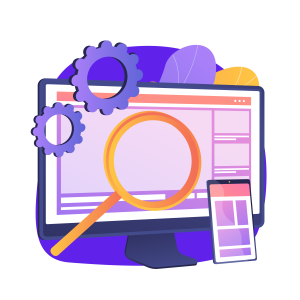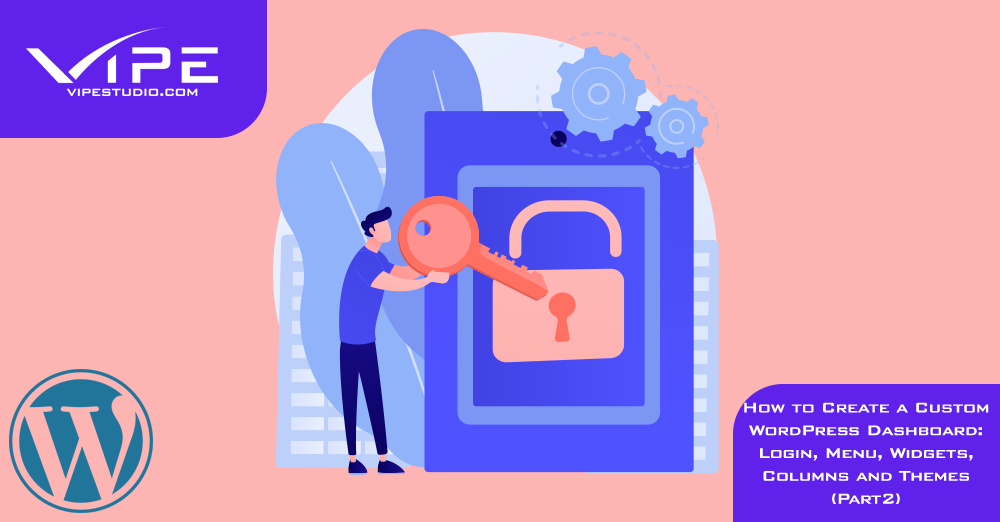30.10.2021
WordPress Development
How to Create a Custom WordPress Dashboard: Login, Menu, Widgets, Columns and Themes (Part2)
READING TIME: MIN
Table of Content
Here you are with us for the second and concluding part of our blog series on customizing your WordPress backend like a pro; though if you wanted the real professionals to handle it, leaving it to your preferred WordPress agency for development would be a hassle-free way too. This time, we’ll be looking at targeted tweaks to the dashboard experience, and introducing a plugin for each purpose, so let’s get right to it!
1. Editing Dashboard Menu Items
Admin Menu Editor might be a freemium plugin, but it gets the job done when it comes to maneuvering what goes (or doesn’t go) into creating the perfect backend sidebar.
With just one activation and install, you can rename menu items, set new icons, add custom CSS, tinker with item categories and menu structure, and even add new menu items that point to your own URLs. Head over to ‘Menu Editor’ in ‘Settings’ to play around with its options.

2. Adding Widgets to your Dashboard
Dashboard Widgets Suite is a free plugin that does a few things really well – such as your own widgets for the dashboard, or a fresh-looking welcome panel.
Widgets you can fashion to your taste include social media, notes or lists, system info, RSS, and logs. Once you have it all set up from the Plugin Directory, find ‘Dashboard Widgets’ under ‘Settings’, and then pick ‘General Settings’ to set such things as the column count and widget visibility. You can also tweak individual widgets to your liking. When all that is done, head over to the Dashboard and pick exactly how your widgets will be arranged.
3. Adding Columns to the Admin Post List
In the dashboard, you’ll find a page that has a list of all the content on your website. ‘Screen Options’ is something that’s already available for you to administer these settings. Though, when you need more granular control, that’s where the Admin Columns plugin comes in. With this plugin in place, you can pick ‘Admin Columns’ under ‘Settings’ to add, remove or move columns around. Even at the free tier, you can add such columns as the reading time for any content. There are of course other powerful plugins that let you even add your own columns, but for anyone new this, the ‘Admin Columns’ plugin works great and streamlines your workflow.

4. Renovate the Dashboard with an Admin Theme
Admin themes technically only behave like themes for the backend of your website, and they certainly don’t affect the internals and structure of your dashboard – just a fresh coat of paint. And if that’s what you’re interested in, here are our picks:
- Kodeo Admin UI
Flatty
Aquila
Kodeo Admin UI is a plugin that themes the whole admin page, down to the editor buttons. Flatty is the theme for you if you need a modern, flat design language, plus such creature comforts as whitelabel capabilities, which of course can also be handled by a reputed WordPress agency for development.
If you want more of a smartphone-like aesthetic for your dashboard UX, the material theme of Aquila might just be your thing. Besides basic theming, Aquila also lets you personalize menu items, widgets, and even brand elements.

5. A Custom Login Page for WordPress
The login page might not be a dashboard component but it’s what people see right before they see the backend in all its customized glory, so it makes sense to give it your own spin too.
Login page customization is crowded with great plugins, so our recommendation for a starter plugin would be Custom Login Page Customizer which lets you theme the login page directly with the WordPress Customizer built into WordPress. Install it from the Directory and activate, and then you’ll see ‘Login Customizer’ added to the menu. Clicking on this will take you to a screen that lets you pick from customizations on the left, and the changes will be reviewed. You can, of course, choose to build on an existing look or create a totally fresh layout to make more drastic changes.
And that brings us to a close on this 2-parter tutorial on customizing the WordPress backend, all the way ‘back’ to the login page. We’ve discussed both all-in-one plugins and specialist ones so that you can achieve the optimal Dashboard to go with your website. We hope you enjoyed these tips and will go try them out pronto. Until next time, it’s us, the guys at Vipe Studio, signing off!
More on The Topic
- Scaling WordPress Without Losing Culture
- WordPress 6.9 “Gene”: What This Release Really Changes
- Managing Gutenberg Chaos at Scale
- The Real Difference Between Managed and Developer-Oriented Hosting
- WordCamp Sofia 2025: A Full Recap of Bulgaria’s Biggest WordPress Event
Tags: customizationmarketingoptimizationpluginthemesuser experienceWordPresswordpress agencywordpress themes
The content of this website is copyrighted and protected by Creative Commons 4.0.



